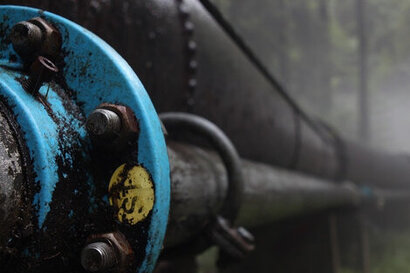
Engineers and researchers may now be one step closer to understanding how hydrogen affects steels, thanks to new University of Sydney research. The researchers found adding the chemical element molybdenum to steel reinforced with metal carbides markedly enhances its ability to trap hydrogen.
Published in Nature Communications, the finding was demonstrated by a team led by Professor Julie Cairney and Dr Yi-Sheng (Eason) Chen. They used an advanced microscopy technique pioneered at the University of Sydney, known as cryogenic atom probe tomography, allowing for direct observation of hydrogen distribution in materials.
“We hope this study will get us closer to revealing exactly why hydrogen embrittlement occurs in steel, paving the way for large-scale solutions to hydrogen transport and storage” said Professor Cairney, who is based at the Australian Centre for Microscopy and Microanalysis, where the research was undertaken.
Hydrogen embrittlement is a process whereby hydrogen causes high strength materials like steel to become brittle and crack. The researchers say it is one of the biggest obstacles to the transition to a hydrogen economy as it prevents hydrogen from being effectively stored and transported at high pressures. This could make understanding and solving embrittlement a multi-billion-dollar question for the renewables market.
“The future of a large-scale hydrogen economy largely comes down to this issue” added Dr Chen. “Hydrogen is notoriously insidious; as the smallest atom and molecule, it seeps into materials, then cracks and breaks them. To be able to effectively produce, transport, store and use hydrogen on a large-scale, this is not ideal.”
Molybdenum was added to the steel, combined with other elements to form an extremely hard ceramic known as ‘carbide’. Carbides are often added to steels to increase their durability and strength.
Using their advanced microscopy technique, the researchers saw the trapped hydrogen atoms were at the core of the carbide sites, suggesting the addition of molybdenum helps trap hydrogen. This was compared with a benchmark titanium carbide steel which did not show the same hydrogen trapping mechanism.
“The addition of molybdenum helped boost the presence of carbon vacancies – a defect in carbides that can effectively capture hydrogen” said Dr Chen.
The added molybdenum represented only 0.2 percent of the total steel, which the researchers say makes it a cost-effective strategy for reducing embrittlement. The researchers believe niobium and vanadium may also have a similar effect on steels.
For additional information:
University of Sydney Australian Centre for Microscopy & Microanalysis
Nature Communications - Engineering metal-carbide hydrogen traps in steels

